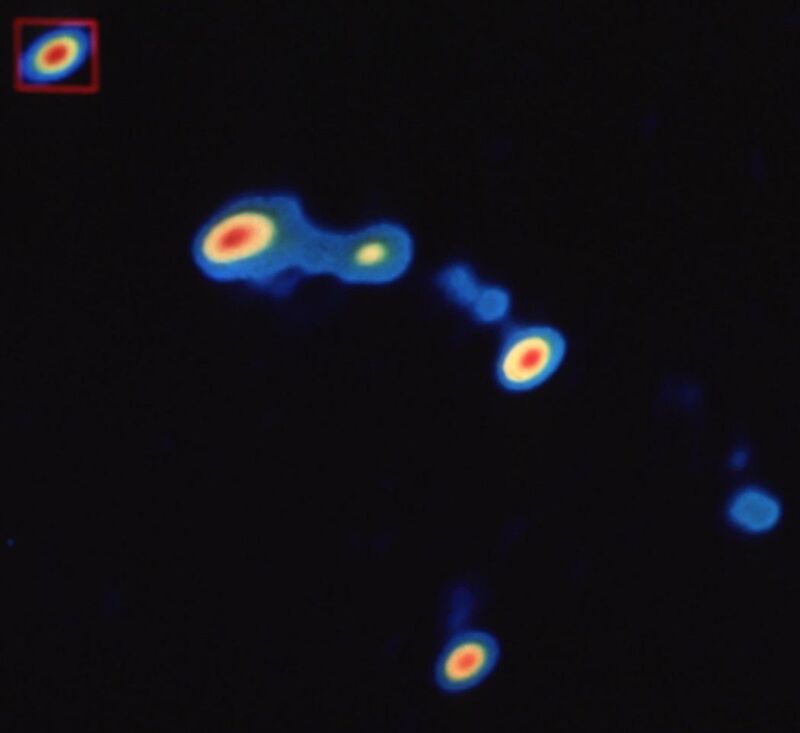Gravitationally Lensed Quasar
Description
This remarkable image is the result of a gravitational lens, an intervening body massive enough to form multiple images of a distant quasar, by the gravitational deflection of light. Two images of the quasar are seen in this radio map - the A image is the bright point-like image north of center, and the B image is the bright point-like image south of center. The weak image just north of the B image coincides with the center of a large galaxy observed in the optical, which, along with the rich cluster of galaxies it lies in, is believed to be acting as the gravitational lens. The rest of the images seen in the map are due to extended radio emission associated with the quasar which have not been multiply imaged. The colors represent the intensity of the radio emission - red is bright, and blue is dim.
VLA in hybrid configuration using 18 antennas. Resolution is 0.8 x 0.4 arcsec.
Creator
Legacy Astronomical Images
Rights
NRAO/AUI/NSF does not hold full copyright for this image. Contact the archivist for details.
Type
Legacy Astronomical Image
Object Name
RGB J1001+558B
Investigators
P. E. Greenfield, D. H. Roberts, B. F. Burke
Telescope
Very Large Array (VLA)
Observation Date
1979-10-13
Type of Observation
continuum
Band
C
Wavelength
6 cm
Frequency
4.885 GHz
Center of Image
RA 10:1:20.860, Dec: 55:53:49.900 (J2000)
Field of View
0.005333 x 0.005333 degrees
Series
Miscellaneous Series
Unit
Cosmology Unit
Citation
Legacy Astronomical Images, “Gravitationally Lensed Quasar,” NRAO/AUI Archives, accessed May 22, 2025, https://www.nrao.edu/archives/items/show/33594.

